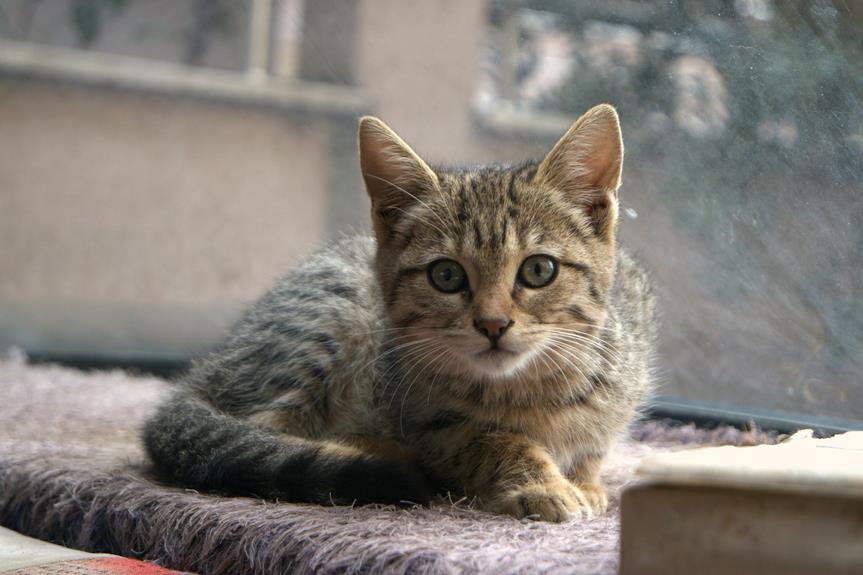
When introducing a new cat to your home, it's crucial to remember that patience is key. Starting with a safe space equipped with all the essentials is just the beginning. But what comes next is equally important. The gradual process of acclimating the cat to its new environment and other household members can set the tone for a successful integration. By taking it slow and ensuring positive interactions, you can pave the way for a harmonious cohabitation.
Setting Up a Safe Space
When bringing a new cat into your home, create a designated safe space where they can acclimate comfortably. This area should be quiet, with minimal foot traffic and away from other pets. Set up a cozy bed, food and water dishes, a litter box, and some toys to keep them entertained. Make sure the space is easily accessible but allows the cat to retreat and feel secure if they need to. Providing hiding spots, like a covered cat bed or a box with a blanket, can help your new feline friend feel safe.
It's important to spend time in this safe space with your cat, allowing them to get used to your presence and voice. Sit quietly, read a book, or work on your laptop to show them that you're a calm and non-threatening presence. Avoid forcing interactions and let the cat approach you at their own pace. By creating a safe space tailored to your new cat's needs, you'll help them adjust to their new environment more easily.
Slow and Supervised Interactions
To ensure a smooth introduction process, gradually introduce your new cat to other household members and pets through slow and supervised interactions.
Start by allowing brief visual introductions where the pets can see each other but can't physically interact. This can be done by using a baby gate or a cracked door. Monitor their reactions closely to gauge their comfort levels.
Once they seem curious but not aggressive, you can proceed to short face-to-face meetings. Ensure these initial interactions are positive by offering treats, toys, and affection to both animals. If any signs of tension or aggression arise, separate them and try again later.
Continue these interactions, gradually increasing their length and frequency as they become more comfortable with each other. Always supervise these meetings to intervene if necessary.
Scent Exchange Techniques
Consider utilizing scent exchange techniques to help familiarize your new cat with the smells of your home and other pets. This method involves swapping items between your new cat and existing pets to help them get accustomed to each other's scents before meeting face to face. Start by exchanging bedding or toys between the animals, allowing them to investigate and become comfortable with each other's smell. You can also rub a cloth on one pet and then let the other pet smell it, gradually associating the scent with something positive like treats or playtime.
Additionally, using a communal scratching post or rubbing each pet with a towel and then placing it near the other can help them adjust to each other's presence. These techniques can reduce potential stress and anxiety when the pets finally meet, as they'll already be familiar with each other's scent. By incorporating scent exchange methods into your introduction process, you're creating a more comfortable environment for your new cat and existing pets to coexist harmoniously.
Establishing a Feeding and Play Routine
Introduce a consistent feeding and play schedule to help your new cat adjust to their routine in your home. Cats thrive on routine, so establishing set times for meals and play can provide them with a sense of security in their new environment. Start by feeding your cat at the same times each day, preferably in a quiet and calm area. This will help your cat feel comfortable and safe during meal times.
Incorporate play sessions into your cat's daily schedule to keep them mentally and physically stimulated. Use interactive toys like feather wands or laser pointers to engage your cat in playtime. This not only helps build a bond between you and your new feline friend but also provides them with essential exercise and mental enrichment.
Remember to adjust the feeding and play schedule based on your cat's preferences and energy levels. By maintaining a consistent routine, you can help your new cat feel more at ease and settled in their new home.




